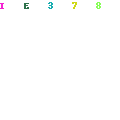How to RAP, or be on-PAR, with your Boss & Employees…
“What’s happening?…what’ve you been up to?”
Has your boss ever sprung this kind of question on you in an unsuspecting moment (…hallway, water cooler, telephone call, while traveling…)?
If you’re like me & some of those I coach, this is often a “deer-in-the-headlights-moment.” You know you’ve been diligent and very busy, but hadn’t organized your thoughts enough not to sound weak or completely random.
Keeping in mind that these touch-points between superiors & employees are often very brief but extremely important in building perception of your performance, how do you structure them be as effective as possible?
Here’s a simple outline using the acronym “RAP” (or “PAR”) so you can easily & quickly remember it:

RESULTS – what are the 2-3 most important outcomes you’ve accomplished?– it says “I’m focused on producing outcomes that count” (what it sounds like:…I’ve written 6 out of 10 training modules and 80% of our salesforce has completed the first two…).
ACTIVITY – what have you been doing that gives color to the result? – it says “I’m working hard and am using my time wisely & effectively” (what it sounds like:…I’m benchmarking leading companies and am using that content to write the modules…I’m also in daily contact with regional managers about who needs training…)
PRIORITIES – what are the macro-priorities you’re focused on? – it says “I see the big picture and clearly understand where I need to focus & have impact” (what it sounds like:…so zooming out, my priorities are on getting the training curriculum completely finished by October and having 95% of the salesforce trained by the end of the year…)
A few practical tips in applying the above:
RAP or PAR – which one do you use? This can depend on the kind of boss you have. Outcome-/result- oriented (use RAP), or big-picture/strategic (use PAR). It can also depend on cultural orientation…some are more prone to need context before getting to conclusions (PAR), others more bottom-line oriented (RAP).
Boss to employee – can it be used going the other way? Of course! It can easily be adapted to expressing your expectations of people that work for you. In this case, I’ve often found PAR to be effective…starting with clear priorities (why), bringing to life with examples of potential activity (how), then clearly defining expected results (what).
Be proactive! – don’t wait for your boss (or employee) to ask…go to them…seek them out…regularly! In fact waiting until they ask can often mean they already have a seed of doubt in their mind about what you’re doing & how you’re spending time. Schedule regular & frequent updates (formal & informal), take control of your narrative & your story.
So why don’t you try it now…today…this week?!…Call your boss, checkin at the water cooler, send a quick email…your next 1-on-1. Start to RAP (or be on-PAR)…NOW!
I’d love to hear it!
Picture: www.itsdiscovery.com






